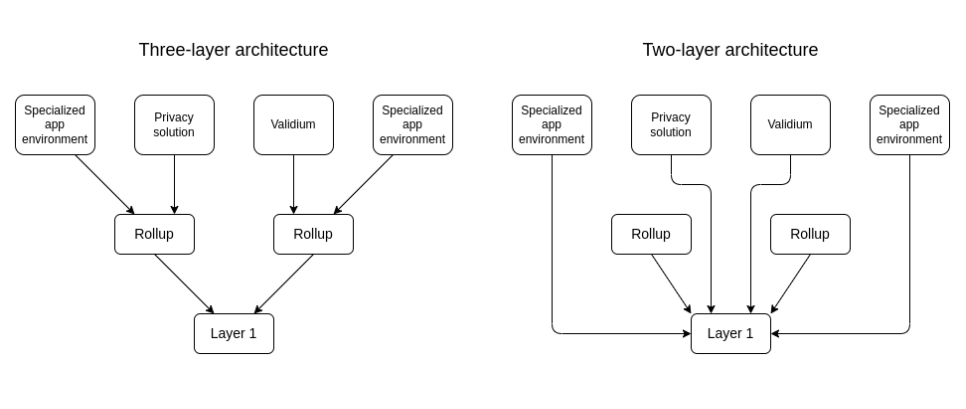Advertisement
Ethereum co-founder Vitalik Buterin shares vision for layer 3 protocol
While Ethereum-based layer 2 solutions have focused on upgrading the network, Ethereum co-founder Vitalik Buterin believes layer 3 will provide custom functionality. Buterin shared thoughts on three visions of layer 3 in the future.
The Ethereum co-founder said layer 3 on the blockchain only makes sense if it provides a different functionality for layer 2, which is used primarily to enhance scaling through zero-knowledge (zk) aggregation technology:
“A three-layer scaling architecture that consists of stacking the same scaling scheme on top of itself generally does not work well. Rollups on top of rollups, where the two layers of rollups use the same technology, certainly do not.”
Layer 3 has custom functionality with privacy-based applications that will use zk proofs to send privacy-protected transactions to layer 2.
Another use case would be “scaling customization” for specialized applications that do not want to use the Ethereum virtual machine (EVM) to perform calculations.
Buterin also says that layer 3 can be used to scale “weakly reliable” through Validiums, an anti-zk technology.
This benefits “enterprise blockchain” applications by using “a centralized server that runs the validium method and regularly commits hashes to the chain.”
Efficiency of layer 3
However, the effectiveness of the layer 3 structure compared to the current layer 2 model in building custom applications on Ethereum has not yet been confirmed.

Network architecture layer 3 Vs layer 2. Source: StarkWare
“One possible argument for the three-layer model over the two-layer model is: a three-layer model allows an entire sub-ecosystem to exist within a single rollup, which allows cross-domain operations within that ecosystem to happen very cheaply, without needing to go through the expensive layer 1,” Buterin said.
However, Buterin says that because cross-chain transactions can be made easily and cheaply between two layer 2s already committed to the same chain, building layer 3 may not necessarily improve the efficiency of the network.
Buterin’s comments on possible layer 3 use cases come when new valid proofs are produced by StarkWare could end Ethereum’s scalability concerns. Declan Fox, product manager at Ethereum software company ConsenSys, said:
“With recursive rollups and proofs, we theoretically can infinitely scale.”
These proofs have been thoroughly tested during production and aggregated up to 600,000 NFTs in a single transaction on Immutable X, and there may soon be 60 million transactions on the cards “with more engineering and tweaking.”
















